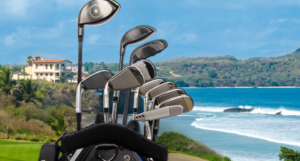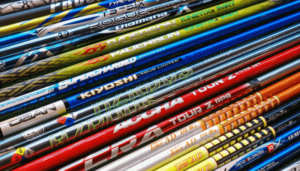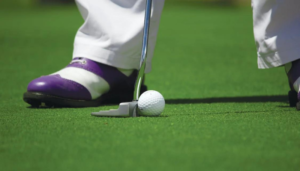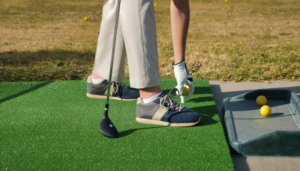Golfers of all levels are asked, “Which golf ball should I use?” The answer may not be as straightforward as you might think, as many factors can impact the performance of a golf ball. In this article, we’ll explore some critical considerations when selecting a golf ball and provide some guidance to help you make the best choice for your game.
Best Golf Ball: What Makes a Golf Ball Good?
Before we dive into the specifics of selecting a golf ball, let’s first talk about what makes a golf ball suitable. Generally, a good golf ball will have the following qualities:
Consistency: A golf ball that performs consistently will help you achieve predictable shots, giving you greater control and accuracy.
Distance: A golf ball that travels far will help you cover more ground with fewer strokes.
Spin: A golf ball that spins appropriately will help you achieve the right trajectory and flight path for your shots.
Feel: A golf ball that feels good to hit will help you develop a better sense of touch and control.
With these qualities in mind, let’s explore the different types of golf balls available and how they might impact your game.
Type of Golf Ball: Soft Golf Ball vs Hard Golf Ball
Compression level is one of the most significant factors to consider when selecting a golf ball. Golf balls can be categorized as soft or complicated based on their compression level.
Soft golf balls have a lower compression rating, typically between 70 and 90. This means they will deform more upon impact, creating a larger contact area with the clubface. Soft golf balls are generally preferred by golfers with slower swing speeds, as they require less force to compress and can create more distance.
Hard golf balls have a higher compression rating, typically above 90. This means they will deform less upon impact, creating a smaller contact area with the clubface. Hard golf balls are generally preferred by golfers with faster swing speeds, as they require more force to compress and can create more spin.
Ball Flight: High Compression vs Low Compression
Another critical factor to consider when selecting a golf ball is the type of ball flight you want to achieve. The level of compression of the ball primarily determines this.
High compression golf balls will create a lower ball flight, with less spin. This can benefit golfers who want to maximize their distance, as a lower ball flight can help the ball roll farther on the ground.
Low compression golf balls will create a higher ball flight, with more spin. This can benefit golfers who want to maximize their control, as a higher ball flight can help the ball stop quickly on the green.
Swing Speed: Slow Swing Speed vs Fast Swing Speed
As mentioned, the golf ball’s compression level is determined mainly by the golfer’s swing speed. Golfers with slower swing speeds should generally use a soft golf ball, while golfers with a faster one should generally use a hard one.
You can use a swing speed radar or consult a golf professional to determine your swing speed. Generally, a swing speed of less than 85 mph is considered slow, while a swing speed of more than 105 mph is considered fast.
Best Golf Ball: Factors to Consider
Now that we’ve explored some key factors to consider when selecting a golf ball, let’s dive into some specific features that can impact your game.
- Spin: Golf balls that create more spin will generally have a softer feel and a higher compression rating. These balls benefit golfers who want a higher ball flight and greater control on approach shots.
- Distance: Golf balls that create more distance will generally have a harder feel and a lower compression rating. These balls benefit golfers who want to maximize their distance off the tee and have more roll on the ground.
- Feel: The feel of a golf ball can significantly impact your game, affecting your confidence and ability to control your shots. Golf balls with a softer feel are generally preferred by golfers who value feel and control, while golf balls with a more rigid feel are generally preferred by golfers who value distance and consistency.
- Price: Golf balls can vary greatly, from a few dollars to over $50 per dozen. While more expensive golf balls may offer better performance, they may not be worth the cost for every golfer. It’s essential to consider your budget and the value you place on performance when selecting a golf ball.
Best Golf Ball: Top Picks
Now that we’ve explored the different factors to consider when selecting a golf ball let’s look at some of the top picks on the market.
Titleist Pro V1: The Titleist Pro V1 is widely regarded as one of the best golf balls on the market, thanks to its consistent performance, distance, and spin.
Callaway Chrome Soft: The Callaway Chrome Soft is a soft golf ball that provides an excellent feel and control while offering reasonable distance and spin.
Bridgestone Tour B RX: The Bridgestone Tour B RX is a high-compression golf ball designed for golfers with moderate swing speeds. It provides reasonable distance and spin while also offering a soft feel.
TaylorMade TP5x: The TaylorMade TP5x is a high-compression golf ball designed for golfers with fast swing speeds. It provides excellent distance and spin while offering a good feel and control.
Srixon Soft Feel: The Srixon Soft Feel is a soft golf ball that provides excellent feel and control while offering reasonable distance and spin. It is also an affordable option for golfers on a budget.
Conclusion
Selecting the right golf ball can significantly impact your game, so it’s important to consider your swing speed, the level of compression, and the type of ball flight you want to achieve. By understanding the different features of golf balls and how they can impact your game, you can make an informed decision and find the golf ball that is best for you. Whether you prefer a soft golf ball or a hard golf ball, a high compression or a low compression golf ball, there is a golf ball on the market that can help you achieve your best performance on the course.




























































